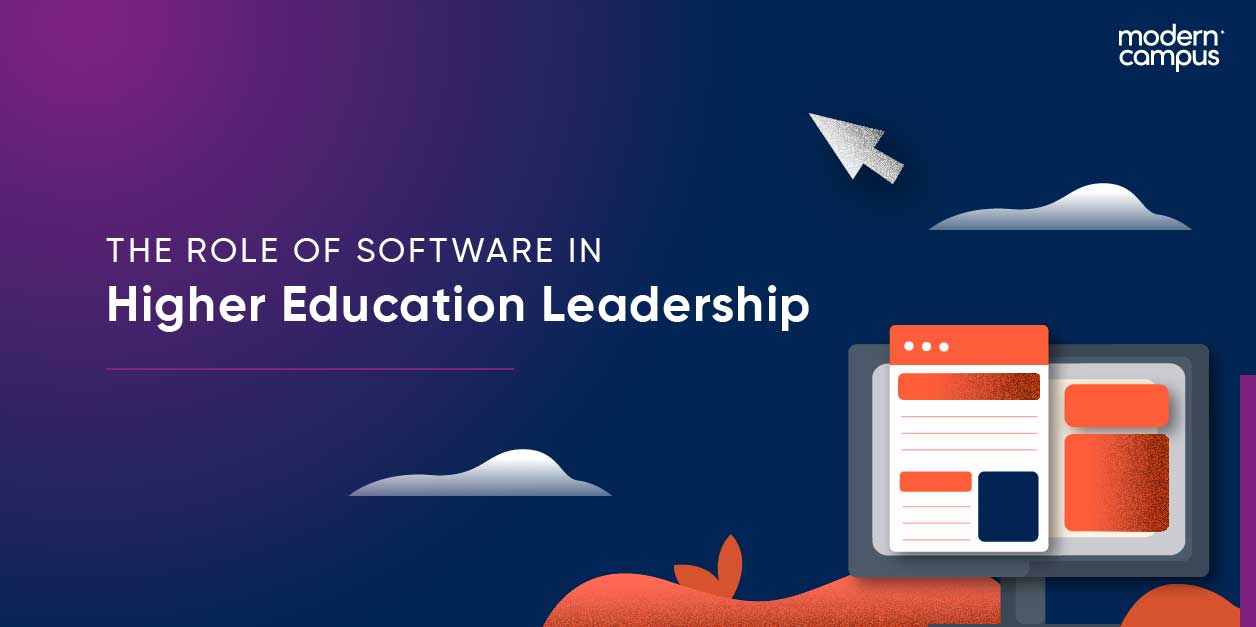Unlocking Success: Organizational Leadership in Education
As academic institutions grapple with complex challenges and opportunities, administrative software has emerged as an indispensable tool, reshaping how leaders strategize, communicate, and manage their institutions.
The integration of higher education management software solutions has not only enhanced administrative processes but also revolutionized the way educators connect with students, faculty, and staff, ultimately redefining the very essence of organizational management and leadership in higher education.
From data-driven decision-making to fostering innovative teaching methods and supporting better financial management, software stands as a cornerstone for modern leaders seeking to navigate the intricacies of academia and steer their institutions toward a future marked by adaptability.
The incorporation of software greatly strengthens the connectivity within academic communities. This shift is especially noticeable in the enhancement of collaboration and communication. Institutions empower their leaders by adopting collaborative tools and platforms, making information-sharing among all stakeholders effortless.
Faculty, students, and staff can now engage more effectively, overcoming the usual constraints of time and distance that often hinder traditional communication. This heightened connectivity fosters a vibrant intellectual community, equipping leaders with the tools to guide their institutions toward a future that emphasizes collaborative innovation.
Simultaneously, software serves as a catalyst for increased efficiency and productivity, redefining how leaders allocate their resources and time. Academic leaders can rely on software solutions to automate administrative tasks, streamline workflows, and provide immediate access to vital data analytics and reportable metrics.
By freeing up valuable resources and enhancing productivity, these tools enable leaders to dedicate their energy to strategic priorities, academic innovation, and student support—ensuring that institutions remain responsive and adaptable in the face of evolving educational challenges.
Implementing Software in Leadership Processes
Incorporating software into leadership processes should have a careful needs assessment. This crucial step helps pinpoint the exact requirements of the institution and its leadership, essentially shaping the software's functionality and scope.
Customization plays a key role in this process, as it tailors the software to perfectly suit the unique demands of the institution. This approach guarantees that the leadership's specific needs are met while also optimizing the software's versatility, transforming it into a dynamic and essential tool for decision-making and administration.
Successful integration hinges on a user-friendly interface, mobile access, and robust security and compliance. User-friendly interfaces simplify software use, while mobile access keeps leaders connected.
Stringent security and compliance protect data and institutional integrity. This balance ensures successful implementation, empowering leaders in administrative and decision-making endeavors.
Modern Campus offers an integrated suite that enhances the student experience, streamlines operations and personalizes education. This unified approach improves higher education leadership and administration for a more student-centric educational landscape.
Tips for Successful Implementation
Change management strategies, staff training, and a dedication to continuous improvement are key factors that significantly ease the implementation process. Effective change management strategies are a crucial starting point, as they help prepare stakeholders for the transition and foster a culture of adaptability and acceptance.
By openly communicating the reasons behind the change, involving faculty and staff in decision-making, and proactively addressing concerns, institutions create an environment where the adoption of new technology is met with enthusiasm rather than resistance.
Simultaneously, staff training empowers employees with the skills and knowledge needed to effectively leverage the software, reducing the learning curve and enhancing productivity. Well-prepared staff not only boost the software's utility but also strengthen an institution's adaptability to evolving needs.
Finally, continuous improvement is the pivotal point that ensures the software's long-term effectiveness. It fosters a culture of ongoing refinement, enabling institutions to stay responsive to changing requirements and to seize new opportunities. Together, these elements create a framework that not only eases the software implementation process but also sets the stage for an institution's lasting success in leveraging technology to enhance education.
At the same time, staff training plays a pivotal role in equipping employees with the skills and knowledge required to effectively use the software, making the learning curve smoother and boosting productivity. Well-prepared staff not only enhance the software's utility but also fortify an institution's ability to adapt to evolving needs.
Additionally, continuous improvement is the keystone that ensures the software's long-term effectiveness. It fosters a culture of ongoing refinement and strategic planning, allowing institutions to remain responsive to changing requirements.
Collectively, these elements form a framework that not only streamlines the software implementation process but also paves the way for an institution's enduring success in harnessing technology to enhance education.
Measuring Leadership Effectiveness
Measuring leadership effectiveness through software implementation centers on key performance indicators (KPIs) and data tracking. KPIs—such as student retention rates, academic outcomes, faculty engagement, and operational efficiency—offer tangible benchmarks to evaluate the impact of leadership decisions and technology integration in higher education.
Using administrative software to collect and analyze relevant data systematically provides real-time insights into an institution's performance. This approach enables leaders to conduct data-driven decision-making, adapt to changing needs, and optimize their strategies, which ultimately enhances leadership effectiveness within the ever-evolving landscape of higher education.
Measuring leadership effectiveness not only relies on KPIs and data tracking but also hinges on the adaptability of the software and a thorough cost-benefit analysis. Software's capacity to adapt and meet changing institutional needs ensures that leadership in schools can respond effectively to dynamic requirements. This flexibility empowers institutions to seamlessly integrate new data and adjust their strategies in response to emerging challenges and opportunities.
Moreover, the process of cost-benefit analysis is pivotal for evaluating the value of leadership decisions and software investments. It enables institutions to gauge how well their financial resources allocated to software solutions align with the benefits obtained, providing leaders with the information they need to make data-informed decisions and optimize their overall effectiveness within higher education.
Software has become the foundation of effective institutional leadership in higher education—it goes beyond being a mere tool; it's the very medium through which leaders strategize, communicate, and navigate the intricacies of academia.
As educational institutions strive to remain adaptable, cost-effective, and innovative, software has emerged as the backbone for their success. Those at the helm of educational institutions recognize that it's not just about embracing technology; it's about mastering it to create a brighter, more efficient, and more accessible future for all within the higher education community.
Last updated: November 7, 2023





